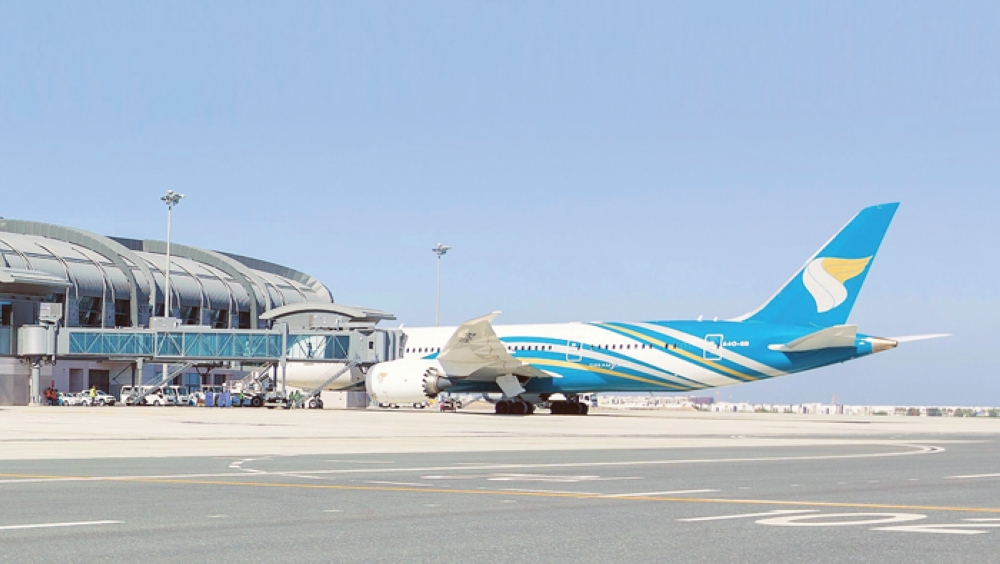
Muscat: The old Muscat International Airport could be turned into a training centre for the Sultanate’s aviation sector, according to Dr. Ahmed bin Mohammed bin Salim Al Futaisi, Minister of Transport and Communications.
“There was a proposal for the old airport to be used as a second building for passengers, but after studying the suggestion it was revealed that operating in two locations would be very costly,” Dr Futaisi told Oman TV,
He added that “focusing on one airport will help in achieving our goal of receiving 56 million passengers, through expansion.”
“We are now considering using the old airport as a training centre for Oman Air, Air Traffic Control and Oman Airport Management Company,” Al Futaisi said.
“The operation of the new Muscat International Airport terminal project is a very big event, and this project is the largest infrastructure project under the reign of His Majesty Sultan Qaboos, bin Said and the building was designed to suit the economic and political status of the Sultanate.
“Airports today are becoming part of the country’s landmarks. We can say that the new airport has become one of the landmarks of Muscat city and we know that it will constitute a qualitative leap in the field of civil aviation and support the tourism sector in the Sultanate. All the construction work for the new Muscat Airport building project have been completed and all the equipment has been verified,” Al Futaisi said.
“Licensed entities, such as the General Authority of Civil Aviation and the General Authority for Civil Defence, issued licenses to operate the building.
The operators have moved into the building and started operations, and we are ready to operate the project fully for passengers today and will follow up the devices to ensure their safety and no problems, and then the project will be officially opened.”
Competitive advantages
“The building is of a high standard of beauty and sophistication and has a special character of Omani originality and modernity, which gives the airport a special competitive advantage for the transient traveller, where Muscat International Airport will be a link between the East and the West,” Al Futaisi said.
The design of the old building is not considered desirable for travellers or for long-term stay. The new terminal, including hotels, shops, and markets, offers a competitive advantage for the airport, and its proximity to the Oman International Exhibition and Conference Centre will support the country’s marketing.
It was previously announced the project aimed to receive 20 million passengers annually, and Al Futaisi explained how the figure might be reached.
“Statistics indicate the number of passengers travelling through Muscat International Airport reached 14 million passengers last year. With the continuation of this growth rate, we can reach the number of passengers we aspire to, and Oman Air added three new destinations for new flights and more aircraft to its fleet,” he said.
The move to the new building is expected to increase passenger numbers, just as the new Salalah airport saw its numbers nearly double to 1.5 million from the 800,000 passengers that used to travel through the old airport.
Modern technology
“We have tried as much as possible to absorb the latest modern systems in the airport sector, for example, the system of bags applied in the new building is one of the latest. In addition to the inspection system applied by the Royal Oman Police and the system of reservations and control, a self-check-in system will be implemented at the airport, which will include the receipt of the ticket and the clearance of passports by automated means, and Oman Airports Company robots to guide passengers,” the minister said.
Previous terminal
Another option being considered is to bring together the Training Centers of Oman Air, Air Traffic Control and Airport Management Company in the old airport building.
“There was a proposal that the old airport be used as a second building for passengers, but after studying the proposal, it turned out that the operation in two locations would be at a high cost, so we decided at this stage to be fully operational in the new building to have our energy concentrated at this airport and to expand the new building to reach 56 million passengers,” Al Futaisi said
Commercial operation
The building is designed to become one of the top 20 airports in the world. However, this would be achieved through other factors, such as speed, performance, efficiency and smooth operating traffic.
It is now up to the operators of the airport to invest in modern technology and efficiently upgrade the airport.
The new strategy in the aviation sector is to connect the tourism sector and travellers, and enable the logistics sector through the transport of goods.
Employment and training
One of the important features about Muscat International Airport is that since the project began, new experts were hired and Omani staff have been trained to handle the new equipment and systems. The project plan included allocating an approved budget for training. This resulted in young Omanis being trained to become the airport’s managers.
“As part of the scheme to provide one thousand jobs, we have presented 400 employment opportunities to date, and a number of contractors will manage and maintain the project, which will create further employment opportunities,” Al Futaisi said.